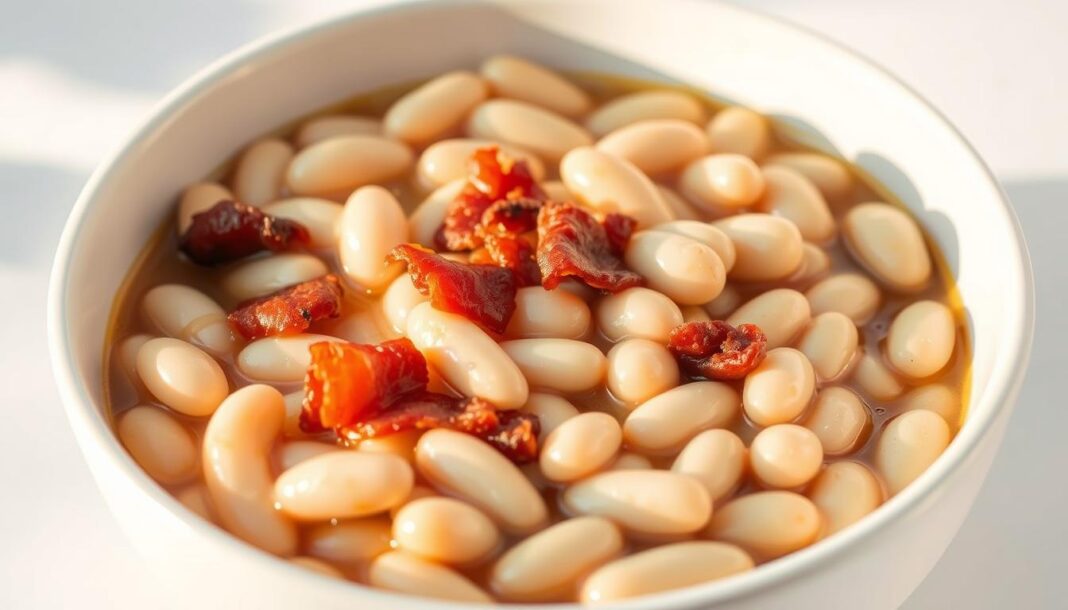We often find ourselves captivated by the culinary creations that appear in our favorite movies and books. From the magical treats in fantasy worlds to the futuristic concepts in science fiction, fictional food has a way of transporting us to new and imaginative realms.
These culinary creations are more than just sustenance; they’re storytelling devices that enhance worldbuilding and character development, making them an integral part of our entertainment experience. As we explore the science behind these creations, we’ll examine how they reflect and shape our perceptions of food in real life.
By analyzing these culinary creations through both scientific and cultural lenses, we can gain a deeper understanding of their significance and the impact they’ve had on popular culture.
Key Takeaways
- Fictional cuisine plays a significant role in shaping our entertainment experiences.
- Culinary creations in fiction often serve as more than just sustenance.
- The science behind fictional foods can reveal interesting insights into real-world cuisine.
- Fictional foods have transcended their original media to become cultural touchstones.
- Some fictional foods have even been recreated in real life, showcasing their lasting impact.
The Allure of Fictional Food in Pop Culture
Fictional foods have become an integral part of pop culture, captivating audiences worldwide with their imaginative and often irresistible appeal. These culinary creations not only tantalize our taste buds but also transport us to new worlds, evoking emotions and sparking our imagination.
The way fictional foods are presented plays a crucial role in their allure, making them seem almost real and incredibly appetizing. This is achieved through a combination of artistic techniques and sensory details that make these dishes stand out.
Why Fictional Foods Capture Our Imagination
Fictional foods capture our imagination by combining creativity with a deep understanding of human emotions and desires. They often represent comfort, nostalgia, or the thrill of trying something new and exotic. For instance, the iconic dishes from fantasy novels or movies not only delight our senses but also become a part of the narrative, enriching the story and its characters.
The Visual Appeal: How Artists Make Fictional Food Irresistible
Artists make fictional foods irresistible by employing various techniques, such as exaggerated colors, textures, and proportions, creating an idealized version of food that appears more appetizing than reality. The use of vibrant colors and detailed textures makes these foods visually stunning, drawing viewers in and making them crave the dishes. Some key aspects include:
- Exaggerated colors and textures to create an appealing visual effect
- Use of lighting and shadows to enhance the presentation of the dishes
- Character reactions to fictional foods, which play a significant role in establishing their desirability
The Psychology Behind Our Fascination with Fictional Foods
Our fascination with fictional foods reveals intriguing aspects of human psychology, particularly in how we respond to culinary creations that are often impossible or fantastical in reality. Fictional foods captivate our imagination, evoking emotions and desires that are deeply rooted in our psyche.
We explore the psychological principle that inaccessible or forbidden items often become more desirable, applying this concept to fictional foods. This phenomenon is evident in how fictional foods that are dangerous, magical, or otherwise impossible in reality hold a particular fascination for audiences. These “forbidden fruits” often serve as metaphors for temptation and desire within their narratives.
Nostalgia and Comfort
Fictional foods can evoke a strong sense of nostalgia and comfort, connecting us to memories or emotions associated with certain dishes or culinary experiences. This emotional connection makes these fictional treats more appealing, as they tap into our deep-seated desires for comfort and familiarity.
Forbidden Delicacies
The appeal of fictional foods also lies in their inaccessibility. The tension between desire and inaccessibility creates a powerful allure for fictional culinary creations. For instance, taking a bite of something forbidden or extraordinary can be a compelling narrative device, driving plot development and character choices in stories.
To illustrate this concept, let’s examine a comparison of psychological triggers associated with fictional foods:
| Psychological Trigger | Description | Example |
|---|---|---|
| Nostalgia | Evokes memories or emotions associated with certain dishes | Madeleines from “In Search of Lost Time” |
| Forbidden Nature | Makes inaccessible or forbidden items more desirable | The “Eat Me” cakes from “Alice in Wonderland” |
| Emotional Connection | Creates a sense of comfort or familiarity | Comfort foods in family dramas |
By understanding these psychological triggers, we can better appreciate why fictional foods captivate our imagination and influence our perceptions of culinary experiences. These things we see in fiction often reflect our deep-seated desires and emotional connections to food.
Magical Treats: Enchanted Foods in Fantasy Worlds
Enchanted foods in fantasy narratives serve as more than just a feast for the characters; they are an integral part of the storytelling. These magical treats not only tantalize our taste buds but also transport us to extraordinary worlds.
Harry Potter’s Wizarding Confections
The wizarding world of Harry Potter is filled with magical confections that are as delightful as they are extraordinary. From Chocolate Frogs to Bertie Bott’s Every Flavor Beans, these treats are not just tasty but also come with a story, often tied to the magical history and culture of the wizarding world.
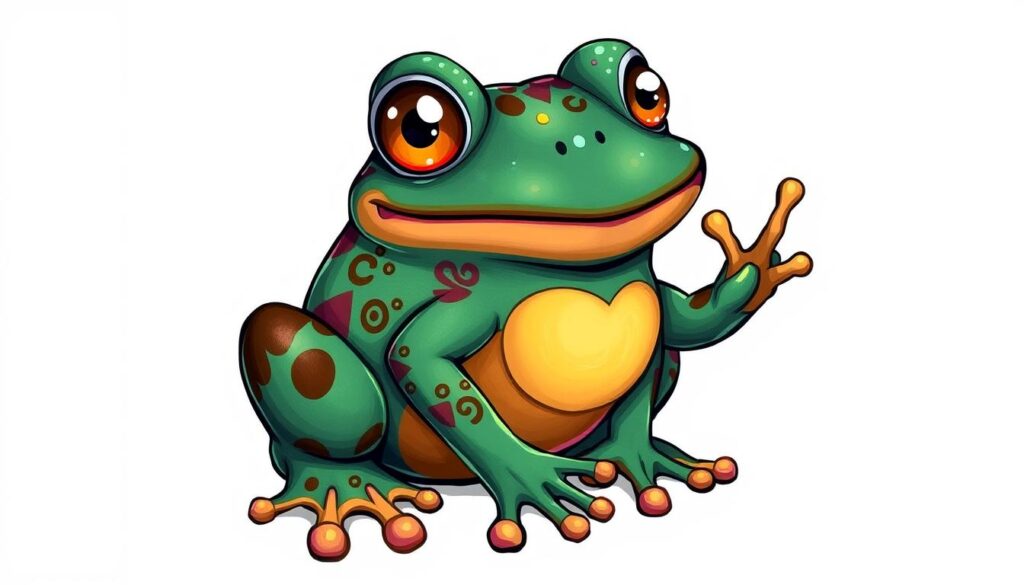
Willy Wonka’s Impossible Candies
Roald Dahl’s imaginative creations in Willy Wonka’s factory push the boundaries of confectionery. Treats like the Everlasting Gobstopper and the Three-Course Dinner Gum playfully violate scientific principles, showcasing Wonka’s brilliance and unpredictability. These candies blend magic with pseudo-scientific explanations, creating a unique category of fictional foods that inspire our imagination and creativity.
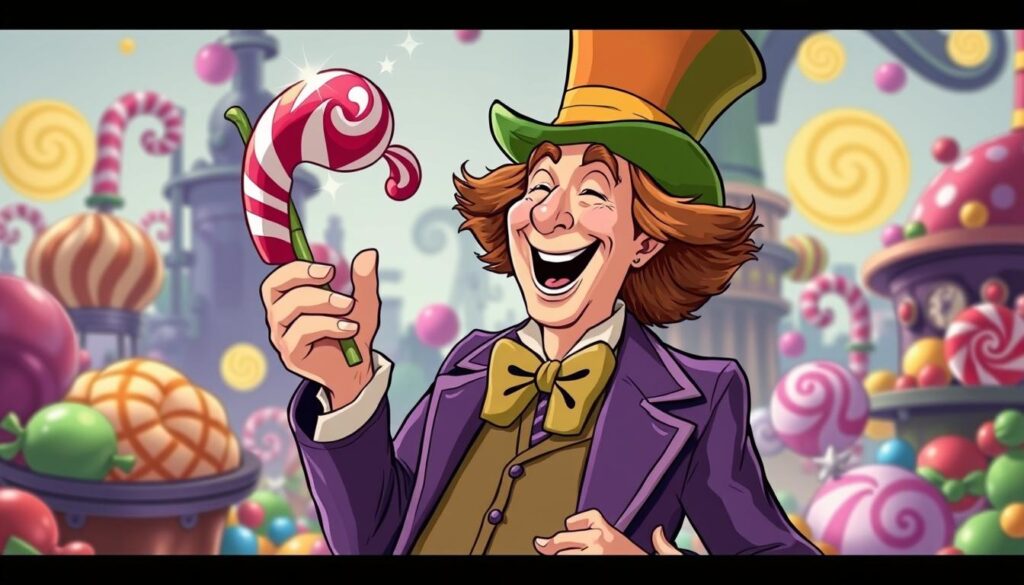
Iconic Fictional Foods from Literature
In the realm of literature, certain foods stand out for their significance and allure. These culinary elements not only enrich the narrative but also leave a lasting impression on readers. We will explore two such iconic fictional foods that have become synonymous with their respective literary works.
Turkish Delight in “The Lion, The Witch and The Wardrobe”
Turkish Delight, as featured in C.S. Lewis’s “The Lion, The Witch and The Wardrobe,” is a symbol of temptation and enchantment. This sweet treat is used by the White Witch to lure Edmund into her trap, showcasing its significance in the story’s plot. The allure of Turkish Delight lies in its magical properties and the emotional connection it establishes between the characters and the reader.
Lembas Bread from “The Lord of the Rings”
Lembas Bread, crafted by the Elves in J.R.R. Tolkien’s “The Lord of the Rings,” serves as both a practical plot element and a symbol of Elvish culture and magic. Its extraordinary nutritional value and longevity make it a vital resource for the characters on their perilous journey. The description of Lembas Bread contributes to Tolkien’s detailed worldbuilding, highlighting the refined, ancient wisdom of the Elves. Fans have attempted to recreate this fictional food, interpreting Tolkien’s descriptions to bring it to life.
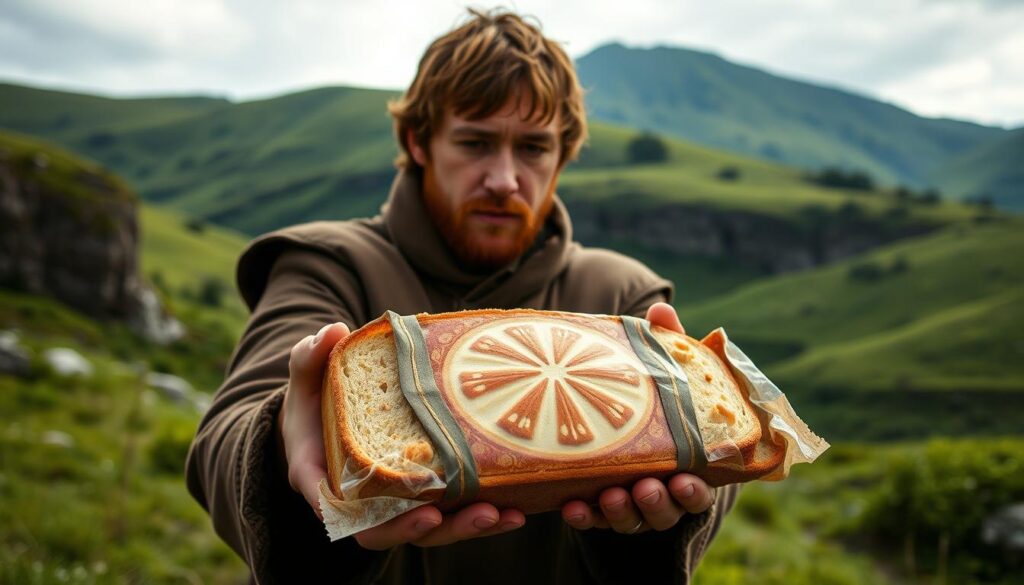
The Science of Creating Fictional Food for Film
In the realm of filmmaking, crafting believable fictional food is a science that combines culinary art with visual magic. We explore how filmmakers achieve this balance, particularly in movies where fantastical cuisine plays a crucial role.
Crafting Culinary Illusions
Food styling is a critical part of this process, involving the preparation and presentation of dishes to look appealing on camera. Techniques range from selecting the right ingredients to using specific lighting to enhance the visual appeal.
Digital Enhancements
The use of special effects and CGI has revolutionized the depiction of fictional food, allowing for the creation of dishes that would be impossible to make in reality. For instance, a steaming hot sauce can be digitally enhanced to look more appetizing or to achieve a specific visual effect.
| Technique | Description | Application in Film |
|---|---|---|
| Food Styling | Preparation and presentation of food for camera | Enhancing visual appeal of dishes |
| CGI | Digital enhancement of food visuals | Creating impossible or complex dishes |
| Special Effects | Manipulation of food appearance on screen | Simulating cooking or splattering effects |
Fast Food Fantasies: Burger and Pizza Creations
In the realm of fictional foods, fast food creations often capture our imagination with their innovative and sometimes absurd concepts. We explore how these culinary fantasies are brought to life on screen, focusing on two iconic examples: The Big Kahuna Burger from “Pulp Fiction” and Cup O’ Pizza from “The Jerk.”
The Big Kahuna Burger from “Pulp Fiction”
The Big Kahuna Burger is a pivotal element in “Pulp Fiction,” symbolizing a moment of tension and conversation between characters. This fictional burger has become a cultural reference point, symbolizing the film’s impact on pop culture.
Cup O’ Pizza from “The Jerk”
Cup O’ Pizza, featured in “The Jerk,” represents a comedic take on fast food innovation. We analyze how this unusual pizza format serves as a character-defining element for Navin, reflecting his naive enthusiasm and unconventional perspective. The concept challenges traditional pizza presentation, inspiring both laughter and curiosity.

Cartoon Cuisine: Animated Foods That Made Us Hungry
From the secret formula of a certain fast food joint in Bikini Bottom to the beloved snacks of a meddling dog and his gang, cartoon cuisine is a fascinating realm. We explore how these fictional foods capture our imagination and drive the narrative forward.
The Krabby Patty Secret Formula
The Krabby Patty, a staple of SpongeBob SquarePants, is more than just a meal; it’s a cultural phenomenon. The secret formula has become a legendary aspect of the show, symbolizing the allure of mystery and exclusivity in food. We analyze how the Krabby Patty’s appeal lies in its simplicity and the intrigue surrounding its ingredients.
Scooby Snacks and Other Animated Treats
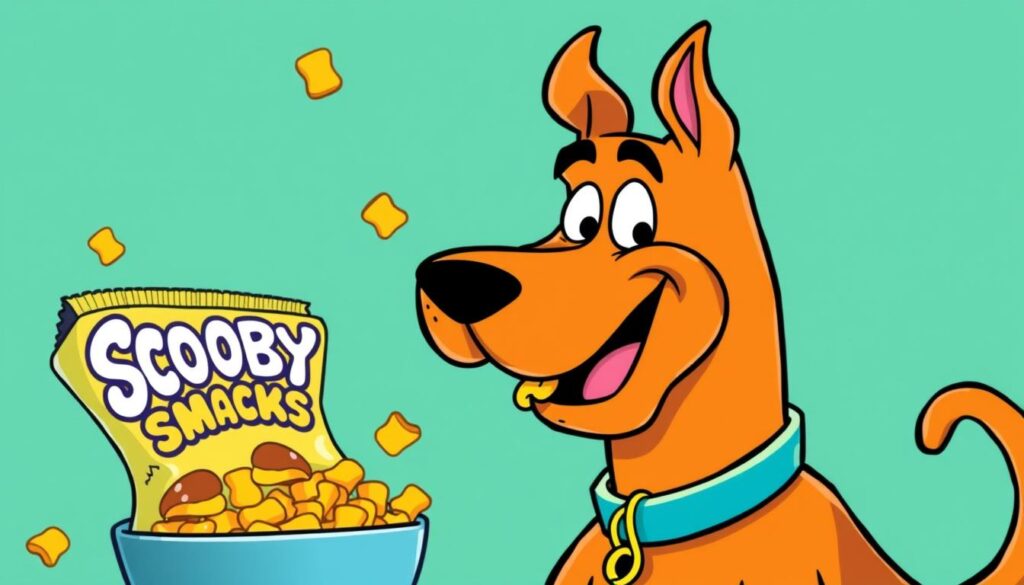
Scooby Snacks are a prime example of how animated treats can become ingrained in our culture. These fictional dog treats not only motivate Scooby and Shaggy but also blur the line between pet food and human snacks, creating humor through this ambiguity. We examine how Scooby Snacks have evolved across different iterations of the show while maintaining their iconic status, and how other animated shows have created their own memorable treats, representing comfort and simple pleasures within their narrative worlds.
Dystopian Dining: Food in Science Fiction
Dystopian narratives often feature food in pivotal roles, highlighting the tensions between technological progress and human experience. Science fiction explores the consequences of a future where food is synthesized, rationed, or entirely replaced by technology. We examine how these narratives reflect our anxieties about food security, sustainability, and the impact of technology on culinary traditions.
Soylent Green: Food Scarcity and Ethical Dilemmas

The 1973 film Soylent Green presents a grim future where the population is sustained on synthetic food, culminating in a shocking revelation about the true composition of these products. This movie exemplifies how science fiction uses food scarcity and ethical dilemmas to comment on contemporary issues, such as overpopulation and resource depletion.
Futuristic Food Pills and Nutrient Solutions
Science fiction often imagines a future where traditional meals are replaced by nutrient solutions or food pills, emphasizing efficiency and convenience. We analyze how these concepts reflect our hopes and fears about the future of food and the potential loss of culinary pleasure and cultural heritage.
The Cultural Impact of Fictional Food
The cultural impact of fictional food is multifaceted, serving as a mirror to our society and a catalyst for narrative development. Fictional foods not only captivate our imagination but also provide a lens through which we can examine our cultural values and storytelling techniques.
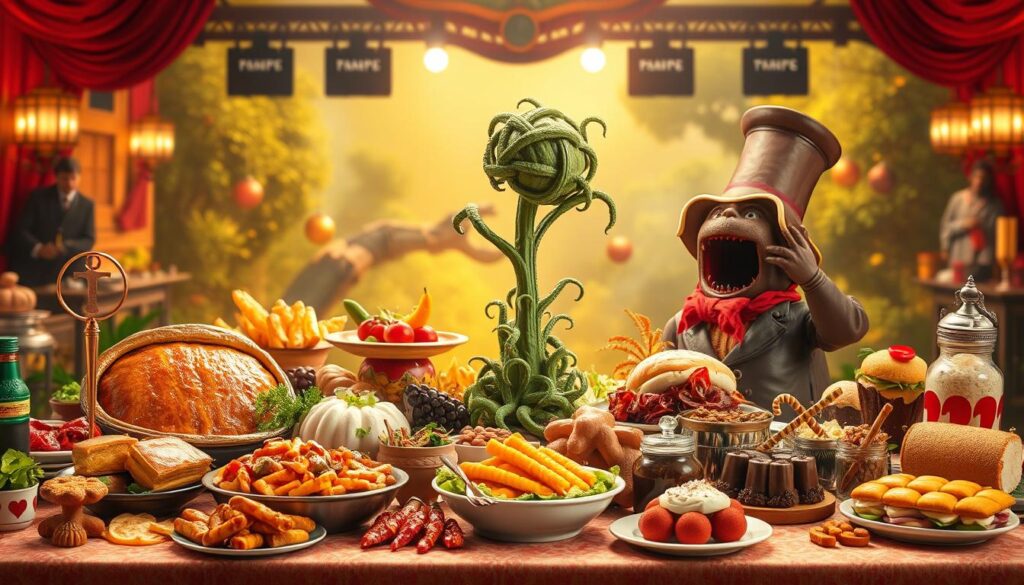
Reflection of Societal Values
Fictional foods often reflect the societal values of the world they are created in. For instance, the depiction of lavish feasts in fantasy movies can symbolize wealth and power, while the scarcity of food in dystopian narratives highlights issues of poverty and inequality. These portrayals not only enhance the narrative but also prompt viewers to reflect on their own relationship with food and its cultural significance.
Food as a Storytelling Device
In narratives, food serves as a versatile storytelling device, revealing characters’ traits, backgrounds, and motivations. Shared meals and food preparation scenes create opportunities for characters development and relationship building, adding depth to the story. Moreover, food-related conflicts often serve as proxies for larger thematic tensions, driving the plot forward and engaging the audience.
For example, in some stories, the preparation and sharing of meals become a symbol of unity and peace, while in others, they represent conflict and division. The use of food in these contexts not only enriches the narrative but also resonates with audiences on a personal level, as it relates to their own experiences with food and communal bonding. Interestingly, even sports narratives sometimes use food as a motivator or reward, highlighting its universal appeal and significance.
The Chemistry Behind Fictional Food Concepts
From Wonka’s chocolate factory to flavor-changing candies, fictional foods often blur the line between fantasy and reality. We explore the chemistry that makes these concepts so intriguing and how they relate to real-world culinary science.
The science behind fictional foods is rooted in real chemical principles. For instance, the concept of Everlasting Gobstoppers, with their multiple layers of flavor, is not entirely fictional. Layered candies and time-release flavors are real confectionery techniques that achieve a similar, albeit less magical, effect.
Chemistry of Everlasting Gobstoppers
Could Everlasting Gobstoppers actually exist? While we may not be able to create candies that last forever, the principle behind them is sound. By using concentric layers of different flavors and textures, candy makers can create a prolonged taste experience. This is achieved through careful control of the candy’s diffusion rate and solubility.
The Science of Flavor-Changing Foods
Flavor-changing foods, like Wonka’s Three-Course Dinner Gum, fascinate us with their instant transformations. While real foods can’t change flavor instantly, molecular gastronomy has led to the development of dishes that transform in flavor and texture. Techniques such as encapsulation and spherification allow chefs to create complex, dynamic dining experiences that approach some fictional concepts.
- Analyzing the chemical mechanisms behind real flavor-changing foods and their differences from fictional instant transformations.
- Exploring how layered candies, time-release flavors, and chemical reactions create changing taste experiences.
- Discussing how fictional concepts exaggerate real principles to create magical effects.
- Examining modern molecular gastronomy’s role in creating transformative dishes.
- Highlighting the sensory science behind flavor perception and cross-modal sensory experiences in fictional foods.
Magical Properties and Transformative Effects
The allure of magical foods lies in their ability to transform and transcend the ordinary, a theme we’ll explore in this section. Fictional foods have a way of captivating our imagination, often blurring the lines between reality and fantasy.
“Eat Me” Cookies: Size-Altering Confections
The “Eat Me” cookies from Alice in Wonderland are a classic example of size-altering confections that have fascinated readers for generations. These magical treats not only change Alice’s size but also her perception of the world around her.
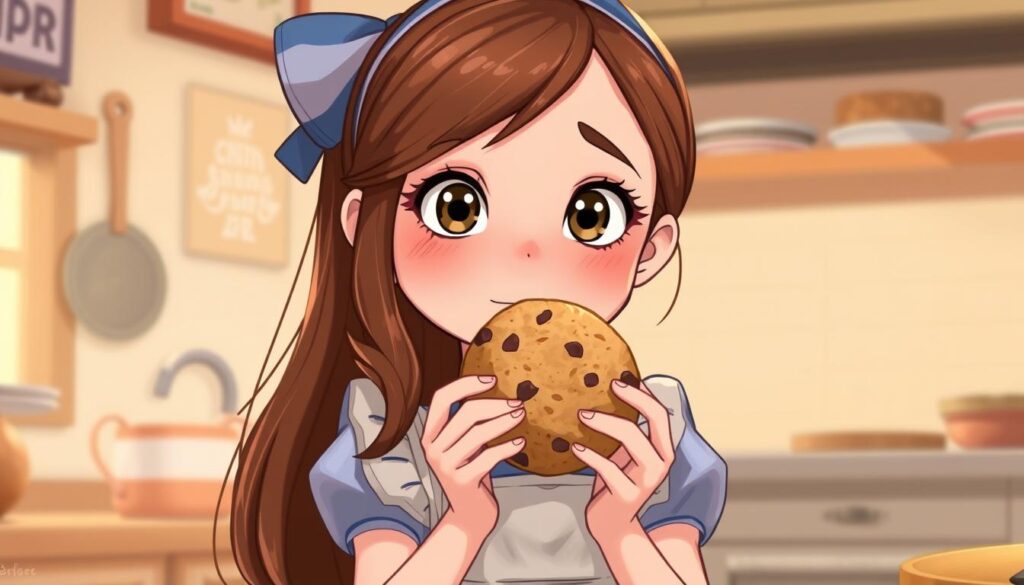
Fizzy Lifting Drinks: The Physics of Floating
Willy Wonka’s Fizzy Lifting Drinks offer another intriguing example of magical properties in fictional foods. We’ll analyze the fictional physics behind these drinks, exploring how they playfully violate the laws of gravity and buoyancy.
- We’ll examine how real carbonation works compared to the magical floating effect depicted in the film.
- We’ll discuss how this fictional beverage creates a memorable moment of both wonder and danger in the narrative.
- We’ll explore how the visual effects for this sequence have evolved across different adaptations of the story.
- We’ll highlight how this concept represents Wonka’s approach to invention—combining delight with risk in ways that challenge conventional limitations.
By exploring these examples, we gain insight into the creative and imaginative ways that fictional foods can captivate and inspire us, often reflecting our deep-seated desires and curiosities about the world around us.
From Fiction to Reality: Recreating Iconic Fictional Foods
From screen to plate, iconic fictional foods are being recreated with surprising accuracy. This trend is driven by fans and chefs who are eager to bring fantasy to life. We see a growing interest in cookbooks and online recipes that detail how to recreate these dishes.
Theme Parks and Immersive Food Experiences
Theme parks are capitalizing on this trend by offering immersive food experiences inspired by fictional worlds. Fans can enjoy dishes like cup pizza, reminiscent of “The Jerk,” in themed environments that enhance the culinary experience. These experiences often feature specially crafted sauce and other ingredients to match the fictional counterparts.
Cookbooks and Online Recipes for Fictional Dishes
The rise of cookbooks dedicated to fictional cuisine has been remarkable. These books, along with online recipes, provide detailed instructions on how to recreate iconic dishes, often using ingredients like eggs in innovative ways. Online communities and social media platforms share and refine these recipes, creating a collaborative approach to culinary recreation.
The Sensory Experience of Fictional Food
The depiction of fictional food in media engages our senses and sparks our imagination. Fictional foods are not just visual elements; they are crafted to evoke emotions and create a sensory experience for the audience.
Descriptive Delights in Literature
Authors use vivid descriptions to bring fictional foods to life. When describing taste and texture, authors often rely on sensory details that readers can relate to. For instance, the description of a rich, decadent chocolate cake can evoke a strong sensory response, making readers crave the experience.
Let’s examine how different authors describe fictional foods:
| Author | Fictional Food | Description |
|---|---|---|
| Roald Dahl | Wonka’s Chocolate | Luscious, rich, and full of surprises |
| J.K. Rowling | Bertie Bott’s Every Flavor Beans | Unpredictable flavors ranging from sweet to sour |
| J.R.R. Tolkien | Lembas Bread | Wafer-like, with a honey-sweetened taste |
Visual and Auditory Cues in Film and TV
In movies and TV shows, the sensory experience of fictional food is enhanced through visual and auditory techniques. Filmmakers use close-ups, slow motion, and vibrant colors to make food appear irresistible. The sizzling sound of a fictional burger or the crunch of a fresh apple creates a multi-sensory experience.
Some key techniques used in visual media include:
- Extreme close-ups to highlight textures and details
- Slow motion to emphasize the cooking process or the consumption of food
- Enhanced colors to make the food more appealing
- Sound design to create an immersive experience
By combining these techniques, filmmakers can create memorable moments that linger long after the credits roll.
Fictional Food as World-Building Elements
World-building through fictional food involves crafting culinary traditions that reflect a society’s values and history. The foods we encounter in fictional worlds are not just sustenance; they’re elements that enrich the narrative and build the world. By creating unique foods, authors and creators can establish the cultural identity of their fictional societies. This culinary world-building can include the types of ingredients used, cooking methods, and the role of food in social and cultural practices.

The creation of fictional foods can significantly impact the believability and depth of a fictional world. For instance, the inclusion of specific dishes or ingredients can hint at a world’s history, geography, or cultural influences. A well-crafted fictional cuisine can make a world feel more immersive and real to the audience.
How Unique Foods Define Fictional Cultures
Unique foods can define fictional cultures by reflecting their values, beliefs, and historical contexts. A special meal might be central to a culture’s identity, symbolizing unity, celebration, or spiritual practices. For example, a particular dish might be served during significant events or ceremonies, highlighting its importance in the culture.
Food Rituals and Traditions in Fantasy Worlds
Food rituals and traditions in fantasy worlds add depth and authenticity. They can reflect power structures, religious beliefs, and historical developments within fictional societies. For instance, a fantasy world might have a traditional feast that marks an important event or a daily meal that signifies family bonding. These culinary traditions help audiences understand the social rules and values of the fictional world.
The Business of Fictional Food Merchandising
From Krabby Patties to Cheesy Poofs, fictional foods have become integral to brand identities and marketing strategies. We see how these culinary creations have transcended their original narrative contexts to become standalone brand assets, driving engagement and sales across various media platforms.
The merchandising of fictional foods is a lucrative business, capitalizing on the emotional connections fans have with these culinary concepts. For instance, Scooby Snacks from the Scooby-Doo franchise have become an iconic symbol, appearing on various merchandise from toys to apparel. Similarly, the South Park series has popularized Cheesy Poofs, turning them into a cultural phenomenon.
Licensed Products and Brand Extensions
Companies leverage fictional foods to create licensed products and brand extensions, expanding their reach and reinforcing brand loyalty. A list of successful fictional food merchandising includes:
- Apparel and accessories featuring fictional food logos or characters
- Themed restaurant experiences and pop-up events
- Fictional food-inspired snacks and beverages
These strategies not only drive sales but also create immersive brand experiences, further solidifying the place of fictional foods in popular culture.
The Marketing Power of Fictional Food Icons
Fictional food icons have significant marketing power, representing the essence of their source material and distilling complex fictional worlds into recognizable symbols. By appearing across multiple media platforms, these icons create consistent brand touchpoints, enhancing their appeal and memorability.
Why Fictional Foods Continue to Captivate Our Imagination
The world of fictional cuisine is rich and diverse, reflecting our deep-seated desires for novelty and comfort. Fictional foods, such as the iconic Big Kahuna Burger from the movie “Pulp Fiction,” captivate us with their creativity and allure.
These culinary creations tap into fundamental human desires, serving as both entertainment and cultural touchstones. As media evolves, so too will the concept of fictional food, creating new immersive experiences. The intersection of fictional concepts and real-world food science is also blurring the lines between imagination and reality.


